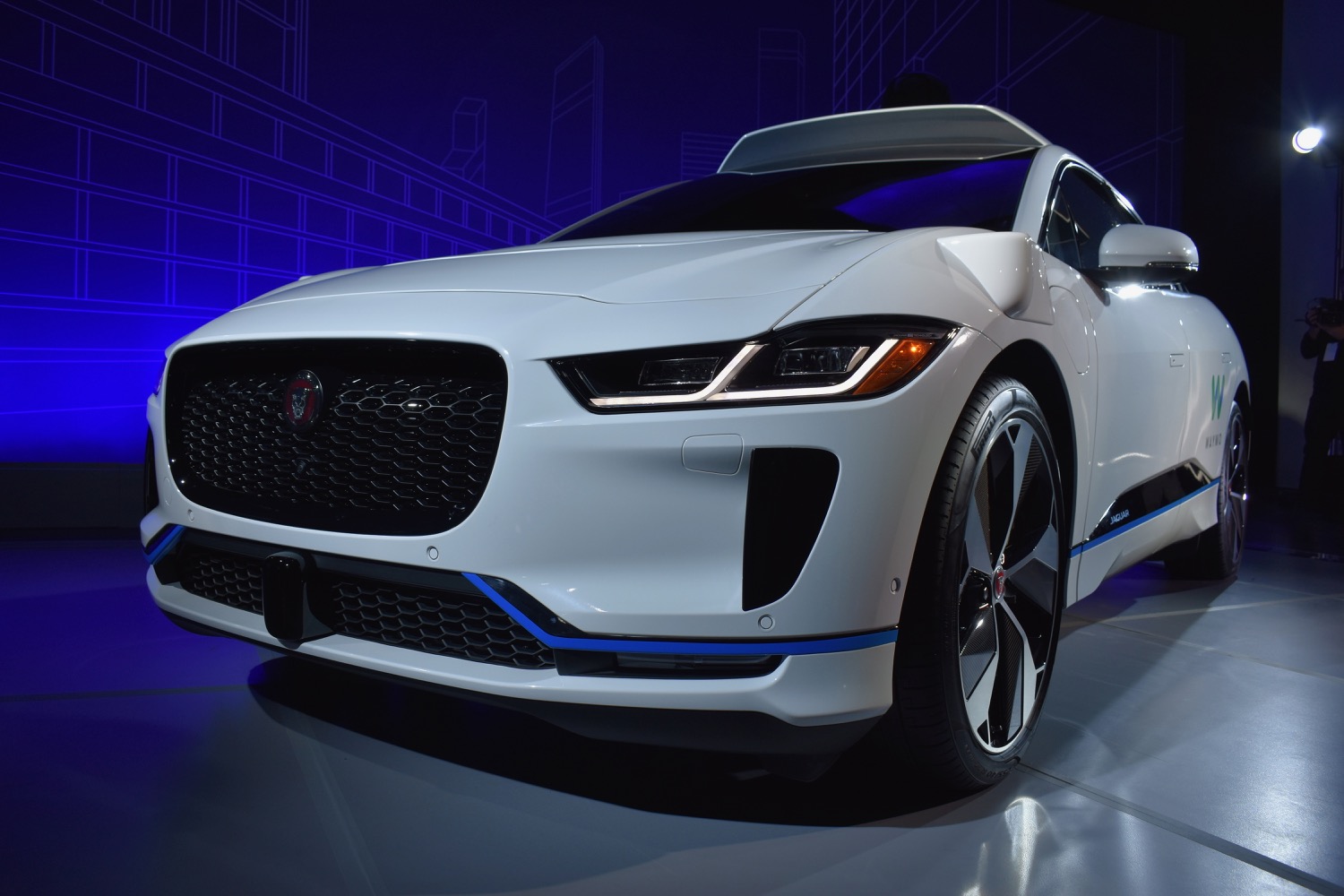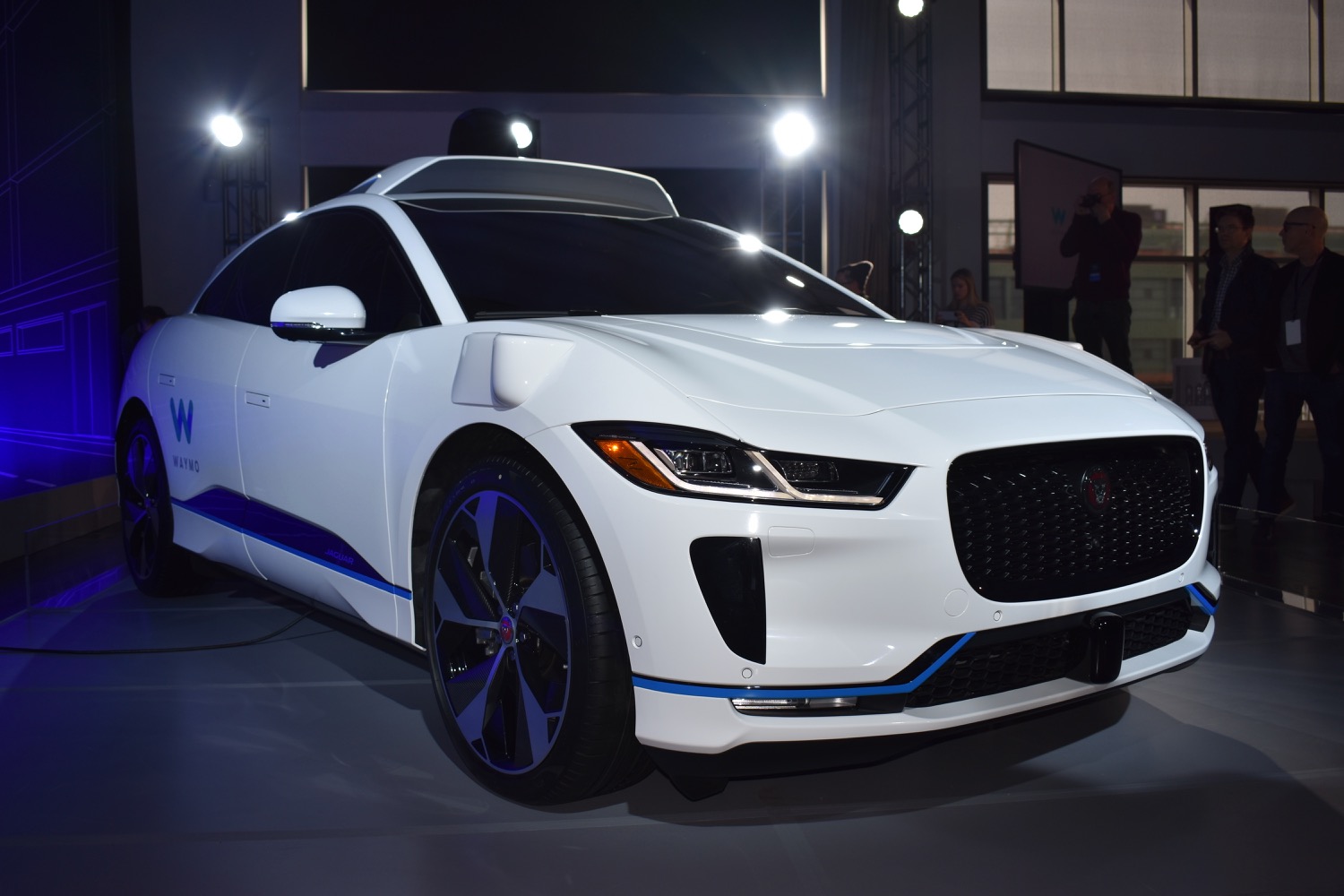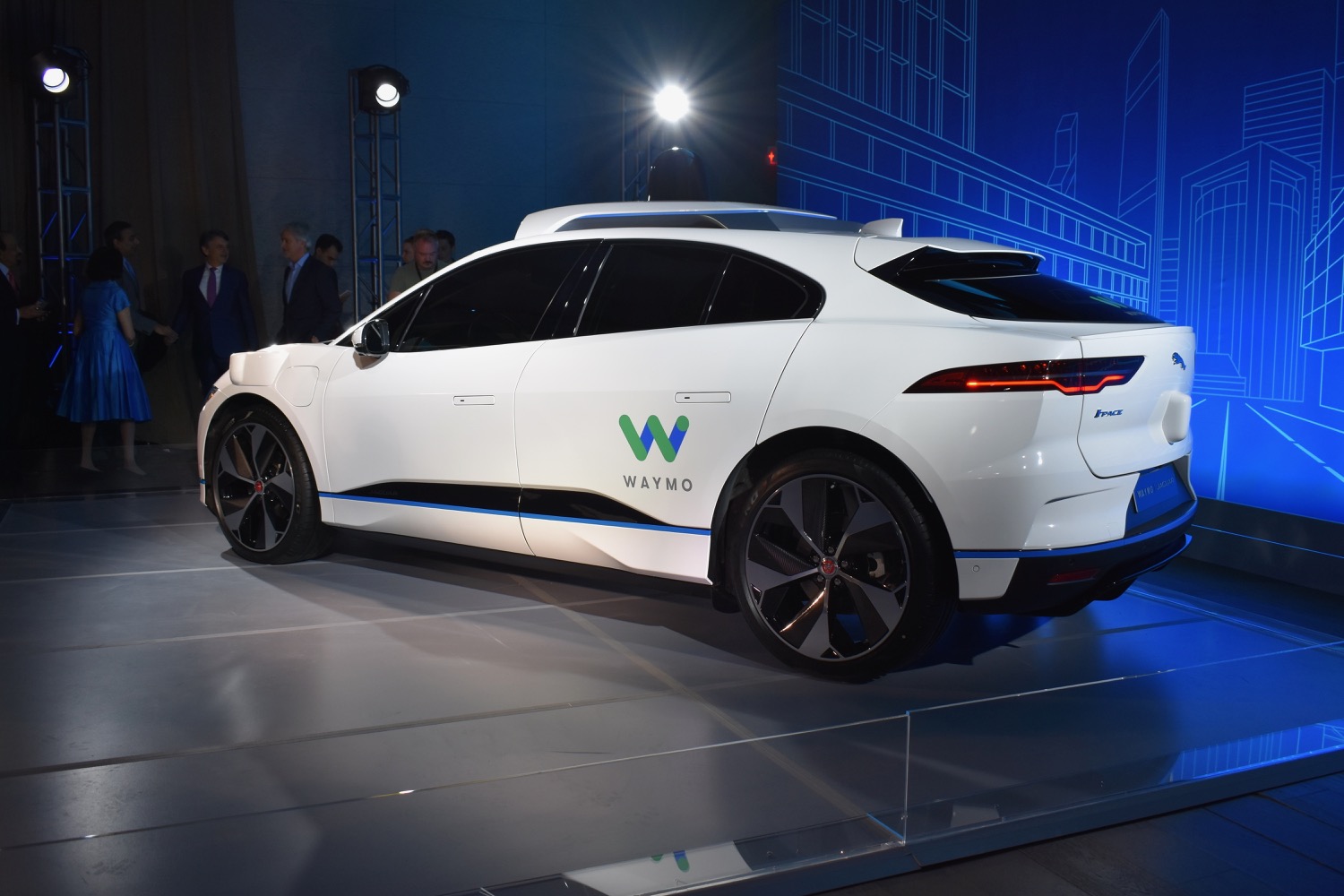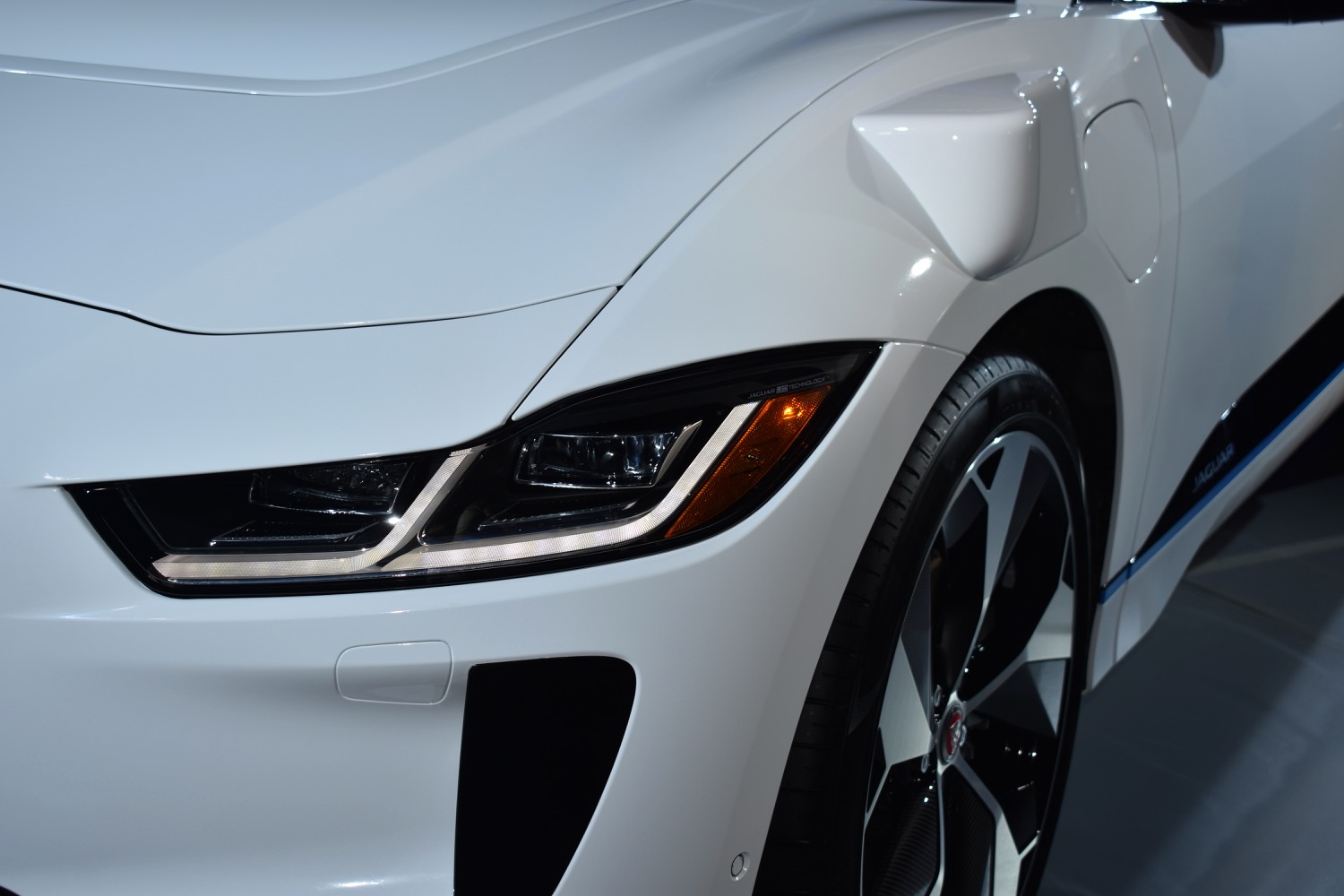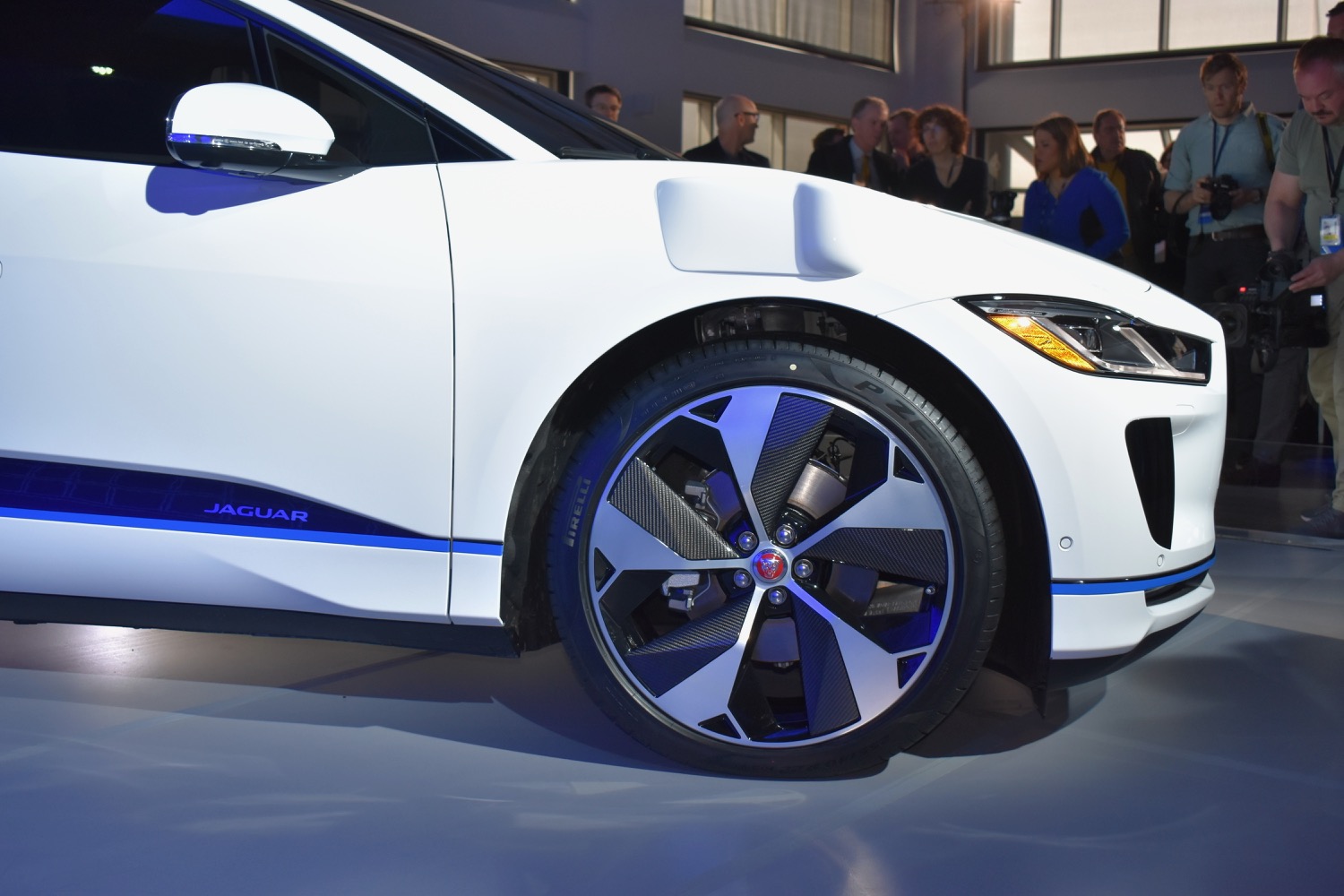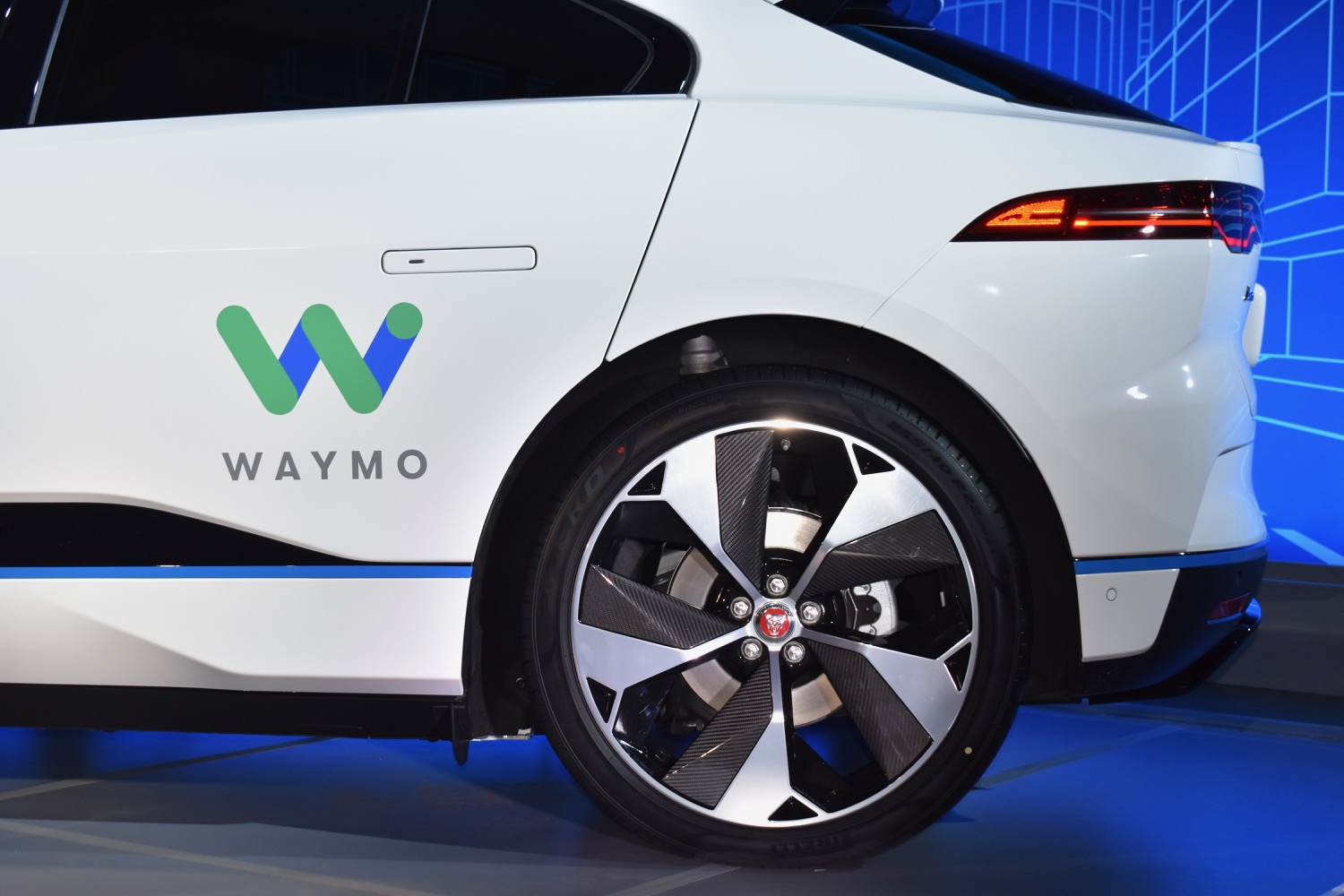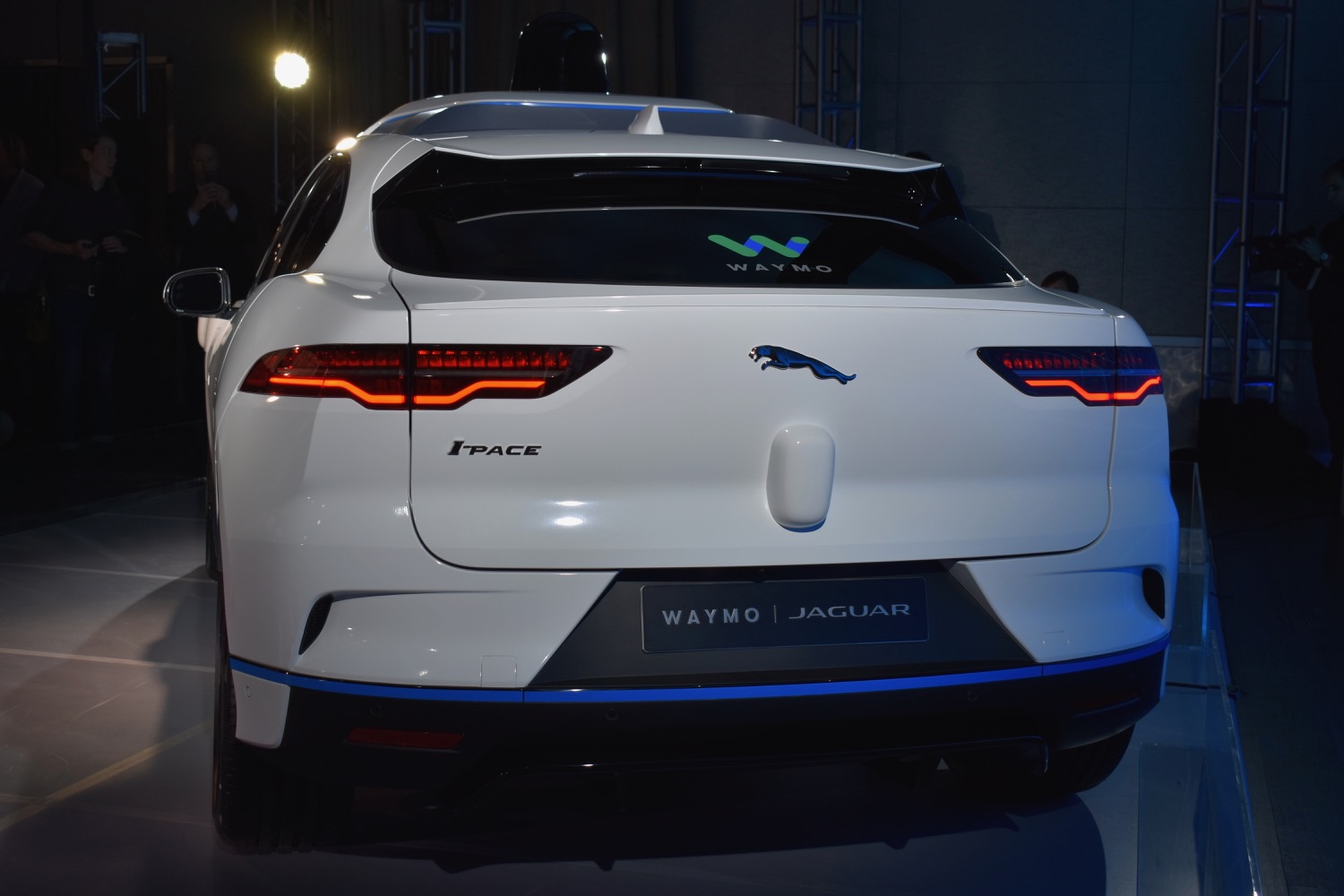In its days as the Google self-driving car project, Waymo used a fleet of modified Toyota Prius and Lexus RX hybrids. Then it graduated to the “Firefly,” a custom-designed electric car. Then it ditched the cute Firefly for more practical Chrysler Pacifica Hybrid minivans. Now, Waymo is adding another car to its fleet.
The Jaguar I-Pace will be Waymo’s latest self-driving car, Waymo and Jaguar announced at a press conference ahead of the 2018 New York Auto Show. Waymo also announced that it will launch an autonomous ridesharing service in Phoenix, Arizona, later this year.
Unveiled at the 2018 Geneva Motor Show, the I-Pace is Jaguar’s first production electric car, and part of a crop of new long-range luxury electric cars aiming to take on Tesla. It’s powered by two electric motors that produce a combined 394 horsepower and 512 pound-feet of torque, and its 90-kilowatt-hour lithium-ion battery pack allows a claimed range of 240 miles.
“The I-Pace was the next, best vehicle for Waymo,” CEO John Krafcik said at a press conference. He cited the SUV’s size, modern electrical architecture, and the range afforded by its large battery pack as reasons for choosing the I-Pace. The Jag also gives Waymo a more luxurious vehicle for potential ridesharing customers that might want one.
Krafcik did not say how many I-Paces Waymo will get initially, but did say the company’s ultimate goal is to add 20,000 to its fleet, enough to provide 1 million rides a day. Waymo does not intend to build its own cars, Krafcik said. Instead, it will adapt its autonomous-driving tech to different vehicles for different applications.
“We’re building the driver, and this same driver can be adapted to all kinds of vehicles,” Krafcik said.
Despite a recent fatal crash involving an Uber self-driving car in Arizona, Waymo is moving ahead with plans for its Phoenix ridesharing service. A planned launch later this year means Waymo will likely become the first company with a commercial-scale autonomous ridesharing service, beating General Motors’ Cruise Automation division. Cars will initially be limited to designated areas of Phoenix, but Waymo will eventually expand the service area and offer the service in other cities, Krafcik said.
Updated: Added live photos from the Waymo I-Pace’s New York unveiling.
